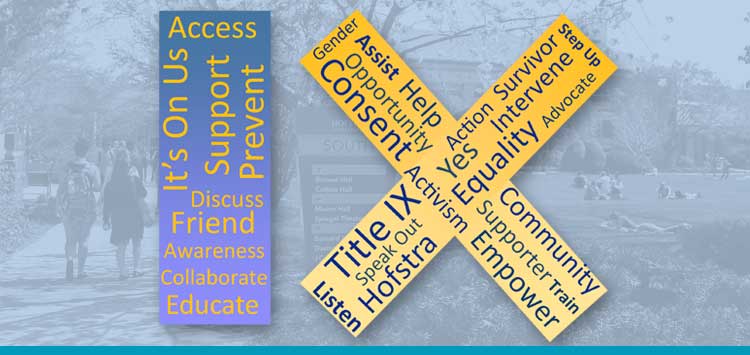What is Affirmative Consent?
Affirmative consent is a knowing, voluntary, and mutual decision among all participants to engage in sexual activity. Affirmative Consent can be given by words or actions, as long as those words or actions create clear permission regarding willingness to engage in the sexual activity. Silence or lack of resistance, in and of itself, does not demonstrate consent. The definition of Affirmative Consent does not vary based upon a participant’s sex, sexual orientation, gender identity, or gender expression.
- Affirmative Consent to any sexual act or prior consensual sexual activity between or with any party does not necessarily “constitute Affirmative Consent to any other sexual act.
- Affirmative Consent is required regardless of whether the person initiating the act is under the influence of drugs and/or alcohol.
- Affirmative Consent may be initially given but withdrawn at any time.
- Affirmative Consent cannot be given when a person is incapacitated, which occurs when an individual lacks the ability to knowingly choose to participate in sexual activity. Incapacitation may be caused by the lack of consciousness or being asleep, being involuntarily restrained, or if an individual otherwise cannot consent. Depending on the degree of intoxication, someone who is under the influence of alcohol, drugs, or other intoxicants may be incapacitated and therefore unable to consent. Students who are charged with initiating sexual activity without consent cannot use as a defense that they themselves were under the influence of drugs and/or alcohol at the time they committed the violation.
- Affirmative Consent cannot be given when it is the result of any coercion, intimidation, force, or threat of harm.
- When Affirmative Consent is withdrawn, or can no longer be given, sexual activity must stop.
It is the responsibility of the student who initiates sexual contact to obtain this Affirmative Consent; in other words, to confirm that the person with whom the student is involved has consented to engage in a sexual activity.
Lack of Affirmative Consent exists where the accused knew, or a reasonable person in the position of the accused should have known, of the other person’s inability to consent. For example, there is no Affirmative Consent where the accused knew, or a reasonable person in the position of the accused should have known, that the other individual was unable to make an informed rational judgment due to his or her use of alcohol or other drugs.
